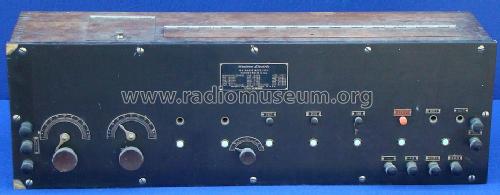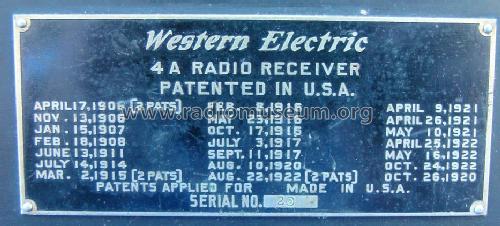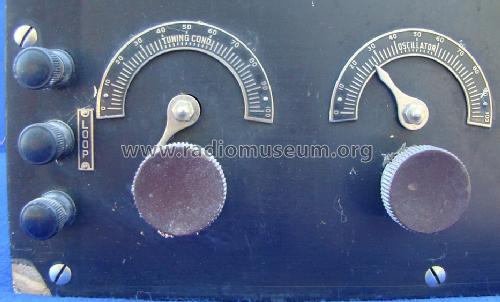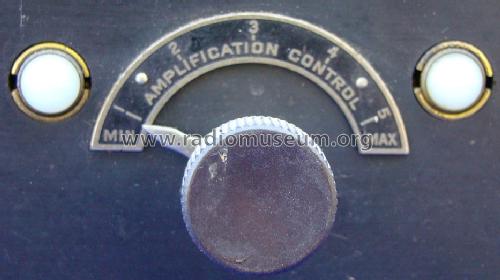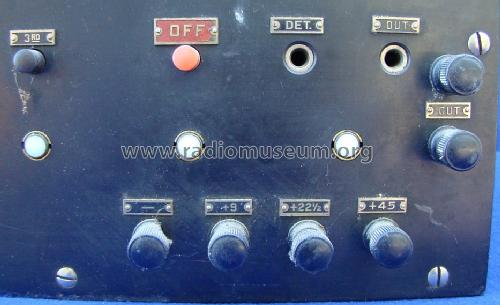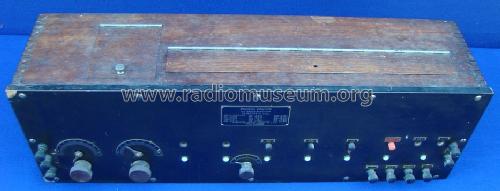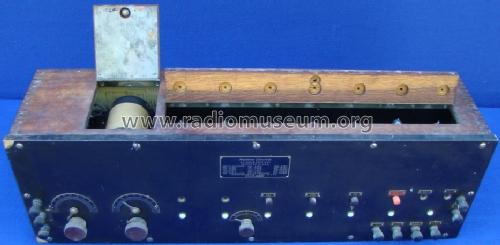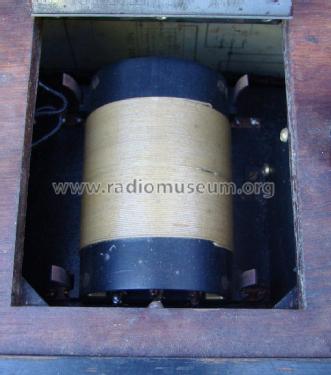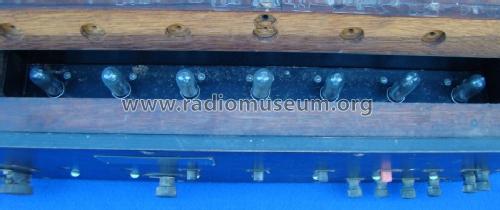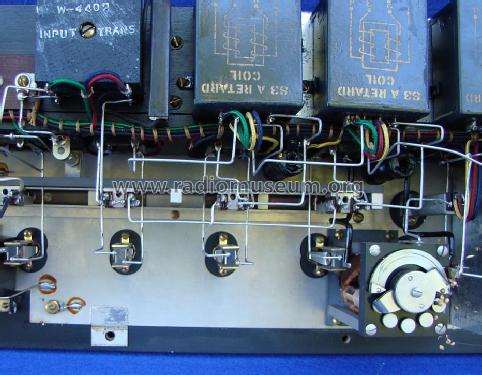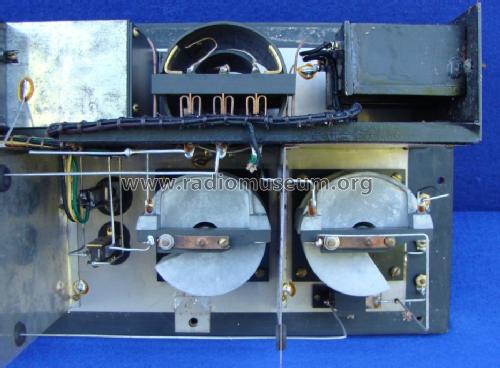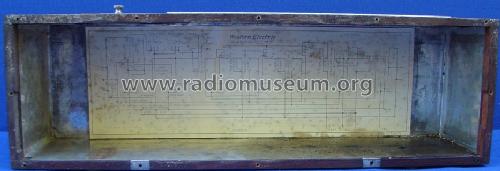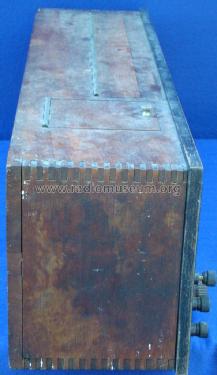- Produttore / Marca
- Western Electric Company Inc.; New York (NY)
- Anno
- 1922
- Categoria
- Radio (o sintonizzatore del dopoguerra WW2)
- Radiomuseum.org ID
- 222014
- Numero di tubi
- 7
- Principio generale
- Supereterodina (in generale); 2 Stadi BF
- Gamme d'onda
- Solo onde medie (OM).
- Tensioni di funzionamento
- Batterie a secco
- Altoparlante
- - Questo apparecchio richiede altoparlante/i esterno/i.
- Materiali
- Mobile in legno
- Radiomuseum.org
- Modello: 4-A - Western Electric Company Inc.;
- Forma
- Soprammobile a cassapanca o cassetta, solitamente con coperchio (NON a leggio)
- Dimensioni (LxAxP)
- 26.75 x 8.75 x 6.75 inch / 679 x 222 x 171 mm
- Annotazioni
- Western Electric 4-A Superheterodyne Receiver designed by Harald Friis. During his career with the Bell System, Harald Friis contributed substantially to almost every aspect of the radio art. His earliest work was on vacuum tube efficiency. He then worked on ship-to-shore radio reception. In the early twenties he built the very first field measuring set, for the 300 to 400 meter range. He also designed the first commercial double-detection or superheterodyne radio receiver, the Western Electric 4A receiver. Double detection means that there are two "Detector" stages: the first one is the mixer (of signal and oscillator frequency), the second one is for demodulation.
- Bibliografia
- Radio Manufacturers of the 1920's, Vol. 3 (Page 232)
- Autore
- Modello inviato da Alan Larsen. Utilizzare "Proponi modifica" per inviare ulteriori dati.
- Altri modelli
-
In questo link sono elencati 171 modelli, di cui 150 con immagini e 32 con schemi.
Elenco delle radio e altri apparecchi della Western Electric Company Inc.; New York (NY)
